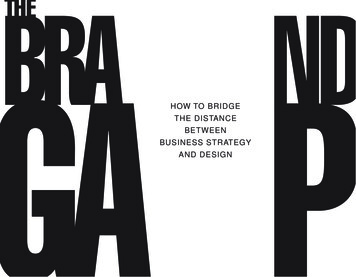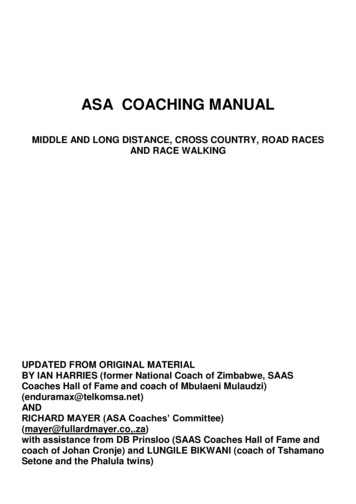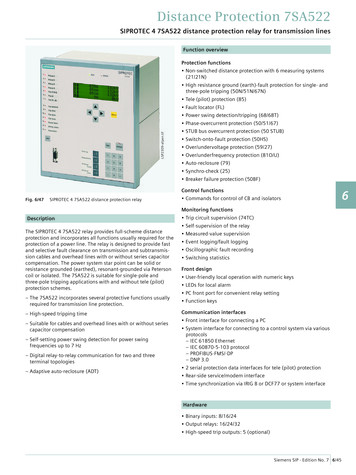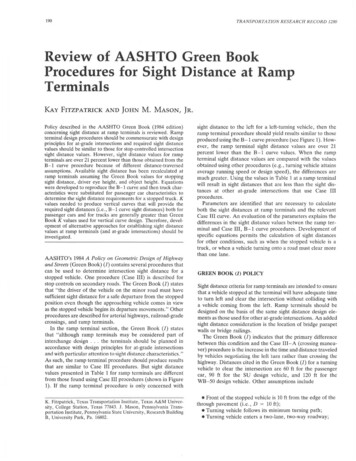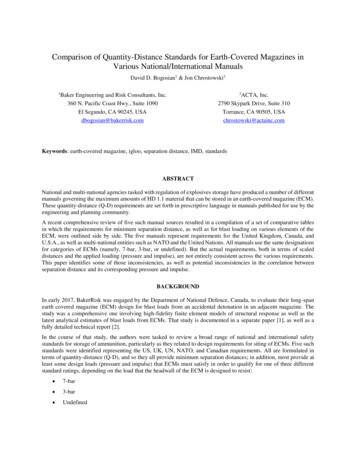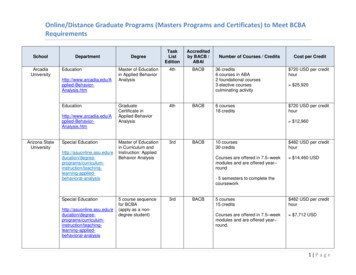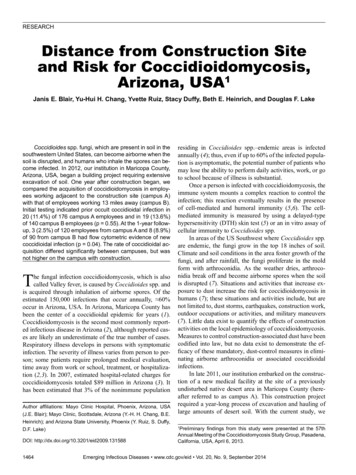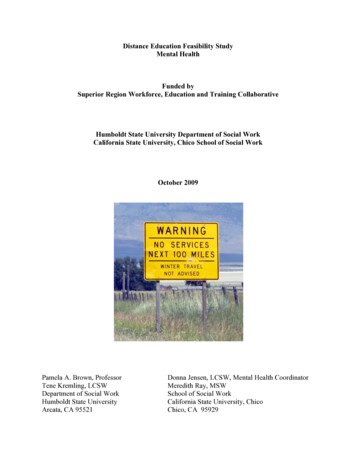
Transcription
Isophote Distance: A Shading Approachto Artistic Stroke ThicknessTodd Goodwin, Ian Vollick, Aaron HertzmannUniversity of Toronto
[McCloud 2006]
Goals of this work1. 3D algorithms for artistic stroke thickness2. How do artists and illustrators use linethickness?
Previous methods: 2DConstant2D TaperingProcedural[Grabli et al. 2004]
Previous methods: 3DDepth[Gooch et al. 99]Lighting[Schlectweg et al. 98]Curvature (proportional)[Sousa and Prusienkiewicz 2003]Radial Curvature (inverse)[Bremer and Hughes 98]
IdeaLambertian rendering (n· v)Contours and Suggestive Contours[DeCarlo et al. 2003]Thresholded (n· v r0)Our approach
Our methodpContour(n· v 0)qIsophote(n· v r0)Stroke thickness is Isophote Distance: p - q ,clamped to range [Tmin, Tmax]
Rim lights and shadows
Ink rendering style
Overdraw rendering style
Brush rendering style
Analytic approximationCamera focal lengthpq p - q Radial curvature(see paper for case of moving light source)DepthIsophoteintensity
Is this a good idea?
Reproducing examples“Bone” by Jeff Smith 2007Our result
Reproducing examples“Bone” by Jeff Smith 2007Our result
Reproducing examples“Bone” by Jeff Smith 2007Our result
Existing methodsProportional to curvature“Bone” by Jeff Smith 1998Inversely proportional to depth
Reproducing examplesTonal drawingArtist drawing [Brudon]Our 3D modelOur rendering
Reproducing examplesScientific illustrationOur rendering
Qualitative propertiesMost drawings don’t quite fit our modelCan we say anything more broadly?
1. Thickness (depth)-1[Gooch et al. 99]
1. Thickness (depth)-1[Gooch et al. 99]Jack Hamm, 1967
1. Thickness (depth)-1A Scanner Darkly, 2006
2. Thickness (radial curvature)-1
2. Thickness (radial curvature)-1a. Large cylindrical objects have thicker strokes(legs arms fingers)Kwan Jung, 2003
2. Thickness (radial curvature)-1a. Large cylindrical objects have thicker strokesDisney 1932
2. Thickness (radial curvature)-1b. Strokes are thicker at “bulges” (e.g., forearms)Eisner 1991A Scanner Darkly 2006
2. Thickness (radial curvature)-1c. Foreshortened objects should be thicker
2. Thickness (radial curvature)-1d. Thinning above the cheekbone
2. Thickness (radial curvature)-1d. Thinning above the cheekboneDisney 1973Gilligan 2006Ware 2006
3. No tapering at contour occlusionUniform 2D taperingOur approach
3. No tapering at contour occlusion
4. Strokes are limited in size
5. Lighting modulates thicknessArtist drawingBrudon 1970
5. Lighting modulates thickness
6. Interior vs. Exterior CurvesInterior (“anticipation”) suggestive contours thinner
6. Interior vs. Exterior CurvesMcCloud 2006Ware 2000
Summary and Future WorkContributions Isophote Distance for stroke thickness Qualitative properties of artist-drawn thicknessFuture work Boundaries and creases “Saturation” Real-time rendering New styles using isophote distancewww.dgp.toronto.edu/ todd/isophote
Tonal drawing Artist drawing [Brudon] Our 3D model Our rendering. Reproducing examples Scientific illustration Our rendering. Qualitative properties Most drawings don’t quite fit our model Can we say anything more broadly? 1. Thickness (depth)-1 [Gooch et al. 99] 1. Thickness (depth)-1 [Gooch et al. 99] Jack Hamm, 1967. 1. Thickness (depth)-1 A Scanner Darkly, 2006. 2. Thickness .
